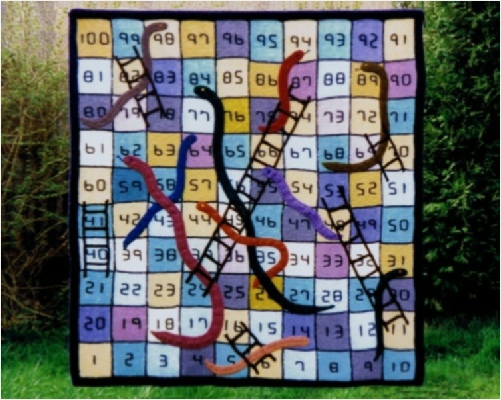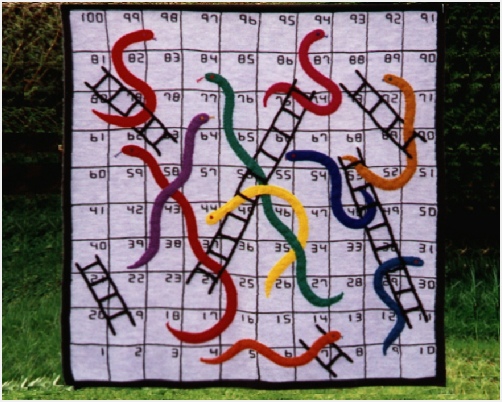

Click to read general information about afghans



Buy a pattern
for this afghan
on the order form
 Buy now
Buy now

SNAKES AND LADDERS
Snakes and Ladders uses the most basic mathematical skill of counting.
Young children can be encouraged to recognise the spots on the dice and count on a matching number of squares. Older children can develop other skills through playing the game.
Use it as an afghan, wall-




RELATED DESIGNS
AFGHAN GAMES

CONSTRUCTION INFORMATION
The hand-
The macine knitted version was made in two pieces with a garter carriage.
The numbers are embroidered on one and in surface crochet on the other.

KNITTING INFORMATION
We made two versions -
The hand knitted version is excellent for using up oddments as every square can be a different colour.
The snakes and ladders can be made in French-
Scroll down for more information about
Snakes and Ladders

The game is primarily to be enjoyed but it is also a means of developing a child’s number skills.
The youngest will only count and match spots to squares. A slightly older child will start to recognise the new position on the board by adding the dice score to the previous number or knowing how many not to score to avoid sliding down the snake.
The next stage is to calculate the position, and how many squares have been lost or gained, when climbing a ladder or sliding down a snake.
Advanced mathematicians could even work out the odds against landing on the next snake or winning the game.
These learning processes are all incidental to the fun of playing the game.